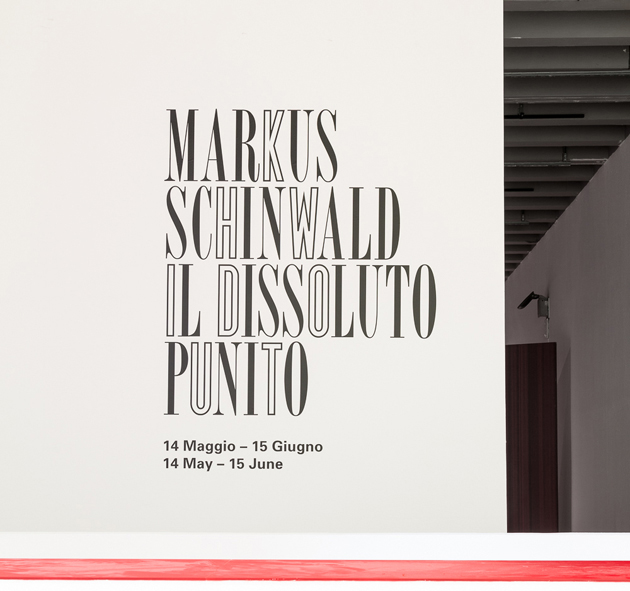
This is not the first time that we talk about the work of Markus Schinwald (b. 1973, Salzburg) and, you bet, it won’t be the last one. The pretext to write, once again, about the brilliant Austrian artist is “Il Dissoluto Punito”, his solo show that just opened at Triennale di Milano, which borrows the title from the well-known grand opera by Mozart (Il dissoluto punito ossia il Don Giovanni).
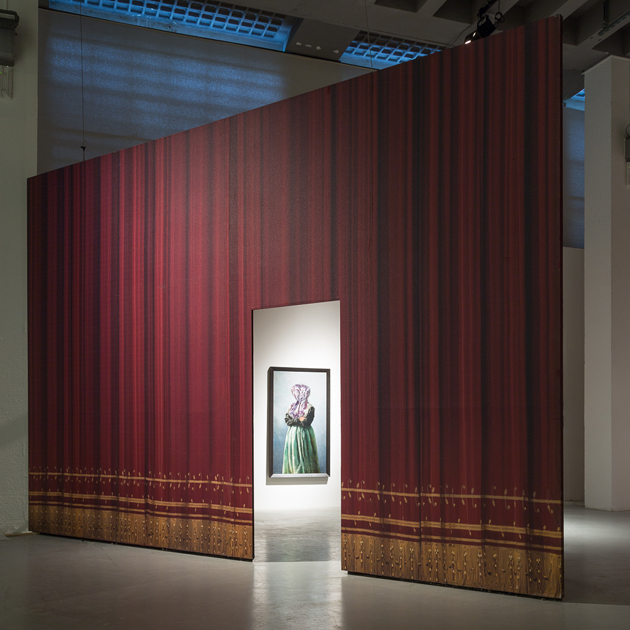
With a continuous cross reference between art and play, the exhibition set-up presents a selection of stage designs produced by La Scala Opera House for the performance of the same name, conducted by Daniel Barenboim and directed by Robert Carsen in 2011-2012. Walking around the path, punctuated by wings reproducing the curtain of the Milanese theatre, the viewers can admire paintings, sculpture and videos of the versatile artist, masterfully arranged to create puzzling spaces.
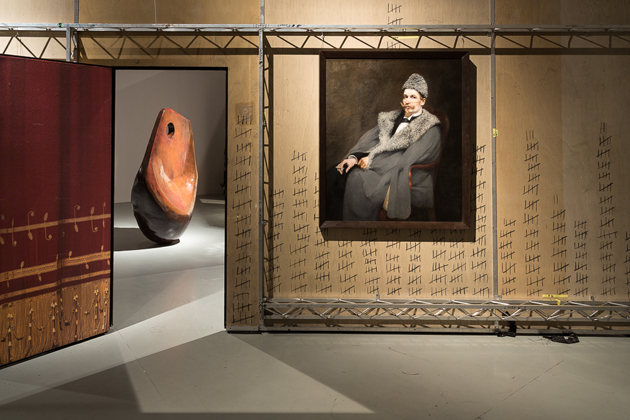
The Culbutos, a new group of sculptures made of resin and carbon fibre, occupy the centre of the scene. They call to mind the oscillating children’s toys of the same name and vaguely similar shapes, to which Schinwald adds impressions of body parts. The representation of the human body and its relationship with the surroundings, along with the concept of instability is one of the artist’s main issues that reveal both perturbing and playful approach.
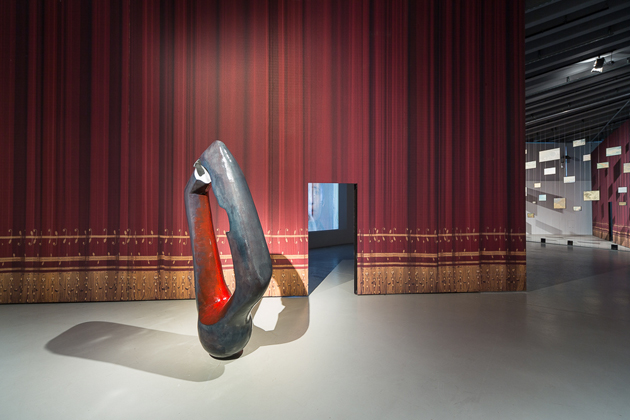
Here and there, hung on the walls or placed behind the doors of the wings, 19th century paintings manipulated by the artist can be found. The depicted men and women are distanced from their original contexts and the atmospheres become undefined: their faces are wrapped with tapestries and scarves; their eyes, noses, mouth, ears, shoulders or hands are tricked up with chains, metal clamps, stripes and bandages that look like weird prostheses or fetish objects, but the characters nevertheless don’t lose their composure from bygone days. Among the portraits there is a gem, which attracted our attention. It is a small work, almost completely covered by a coat of dove-grey with a hole in the centre that allows a half-view of man’s face, who appears to peephole the room.
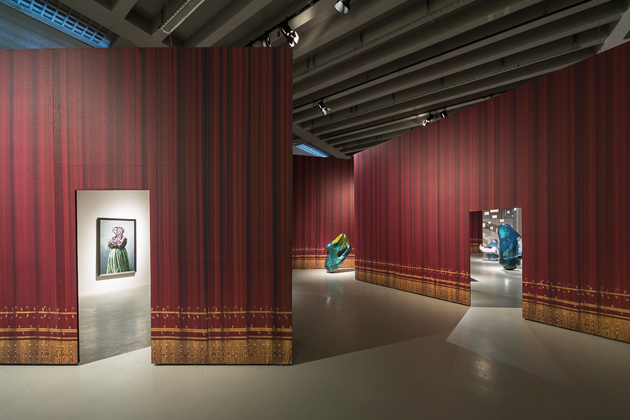
At the end of the exhibition path, you can find a huge installation, which once again recalls a theatre stage, made with numerous paintings representing clouds hung by threads and bearing the evocative title Skyes (2012) and two representative videos of Schinwald’s poetics. The former, 1st part Conditional (2004), is a three-minute film showing a woman wearing a classic suit, seated in a 19th-century apartment, who unexpectedly begins to move her body in a convulsive and disordered way. She seems to be possessed by a mysterious inner or external force that causes her contortions, while a sweating bearded man seated in an armchair is watching the scene from a corner. But we don’t know if he is the cause of the woman’s agitation or just a witness. The video ends with an act of disorienting and sympathetic self-destruction: the heavy furniture of the room falls down and crashes to the ground in the very same moment when the woman jumps in the wardrobe.
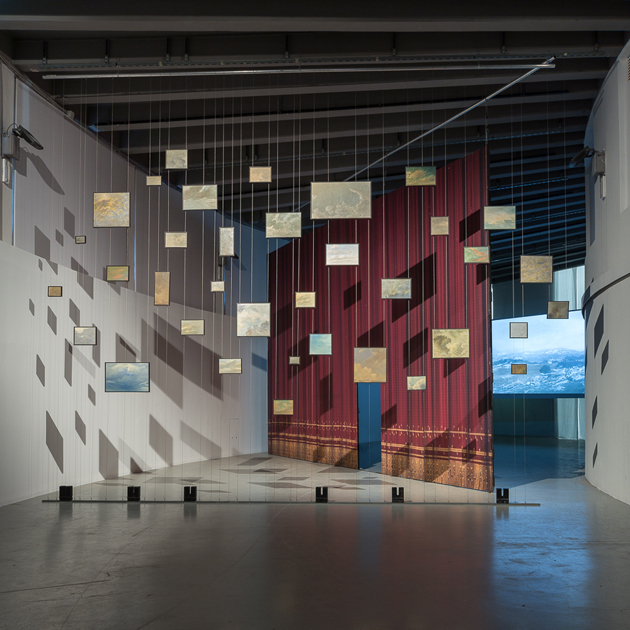
The latter film, Children’s Crusade (2004), takes inspiration from the folk tale Pied Piper of Hamelin: in a contemporary city with graffiti on the walls, a man-sized marionette with a window on his face flipping from open to close attracts children dressed in old-fashioned garments, who follow him, passing through cities, plains, forests, before finally reaching the sea following Benjamin Britten’s Opus 82 (Children’s Crusade) tune sung by a melancholic children’s choir. Macabre and, at the same time, extremely touchy, Markus Schinwald’s works always have a strong psychic effect that intrigues the audience, raising questions and combining intellectual research with art devices.
The exhibition will run until 15th June 2014.
Monica Lombardi
